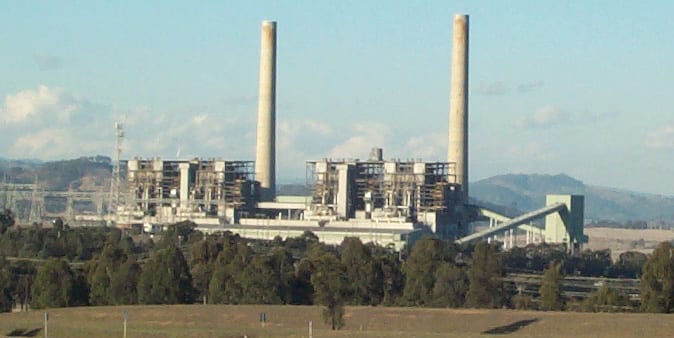
The Australian Energy Market Operator has endorsed AGL Energy’s plans to replace the soon-to-be-closed Liddell coal plant in New South Wales, saying that they are more than enough to meet the potential shortfall created by the closure.
In a report to the federal Coalition, which had lambasted AGL over its Liddell closure plans and had attempted to force it to keep it open a further five years, AEMO says the closure will leave a shortfall of around 850MW of dispatchable capacity.
But AEMO says AGL’s plans for renewables, storage, demand management and gas generation – should they be delivered in full by AGL, or by another party – would deliver at least 1,000MW of new dispatchable capacity.
“In its entirety, all three stages of AGL’s plan would deliver sufficient dispatchable resources to fill the identified 850MW resource gap,” AEMO writes in its letter to federal energy minister Josh Frydenberg.
It says the plan pushes the risk of load shedding to a one in 20 year event.
AEMO notes that AGL, which only confirmed the decision to close by 2022 in December, had so far only committed to a $200 million upgrade of the Bayswater power station, but said that the rest of the capacity outlined in AGL’s three phase plan would be sufficient.
It did note, however, that if other market participants stepped in with their own plans – be it for battery storage, pumped hydro, gas generation, demand management – then AGL may no longer see an opportunity to go ahead with its third phase (which is mostly a 250MW battery storage unit).
AEMO’s assessment was requested by the Coalition government, which was disbelieving about the ability of new technologies to replace an ageing, and an increasingly unreliable coal generator
AEMO’s base case was more or less unchanged from its assessment last year: that if the market did not respond to the Liddell closure with new dispatchable capacity, then there was a heightened risk of a supply shortfall and a risk of outages, particularly in very hot summer days.
And mainstream media – who were given copies of the report and Frydenberg’s response by his office a day ahead of RenewEconomy – snapped their heals to attention and chose to echo the Coalition talking points: i.e. what might happen if AGL, and other market participants, chose to do absolutely nothing.
 “Closure sparks blackout warning,” headlined Rupert Murdoch’s The Australian on its front page (see internet post image to right).
“Closure sparks blackout warning,” headlined Rupert Murdoch’s The Australian on its front page (see internet post image to right).
“Blackout fears as AGL lags on plan,” thundered Murdoch’s Daily Telegraph.
Closing Liddell could cause blackouts for 200000 homes: AEMO, the AFR said.
Warning of power shortfall risk after closure of Liddell plant, wrote the Guardian.
“Blackout risk without better power plan,” said both Nine News and The West Australian.
The mainstream media’s focus on blackout risks has been consistent. It continually warned of blackouts over the past summer, even though AEMO repeatedly underlined the fact that these scenarios were only their “do nothing” outcomes.
We wrote about it at the time – Blackouts and baseload: Debunking myths of AEMO reports and Liddell.
In any event, there were no blackouts caused by a lack of supply over the last summer, much to the disappointment of many in the conservative media who had been calling for them to show that renewables do not work.
Frydenberg’s press release in response to the AEMO report on AGL’s plans for Liddell also focused on the “do nothing” outcomes.
“Without the implementation of AGL’s full plan or equivalent investment by others, AEMO has concluded there will be an 850MW shortfall in dispatchable power and in their words ‘a high risk of load-shedding’ following the closure of Liddell,” he said.
“The existence of a major shortfall in dispatchable power following Liddell’s closure would clearly present an unacceptable situation undermining the stability of the system.”
Predictably, he used this as an argument for the National Energy Guarantee,
However, AEMO’s report, while mentioning the NEG, was largely devoted to the need for a strategic reserve of distributed generation and flexible load, and its hope that it can get other members of the Energy Security Board to agree.
It says that the NSW grid – which relies on coal generation more than any other grid in Australia – is heavily dependent on imports, and at increased risk of failure from one of its big fossil fuel generators, particularly under more extreme weather conditions.
The Liddell units suffered repeated outages (half of it was unavailable for most of summer), as did many other coal generators in NSW, Victoria and NSW (More than 50 trips, or sudden outages).
AEMO says extreme heat is placing more stress on coal generation, and more wind and solar mean more weather variance. It wants a strategic reserve over and above the AGL plans to ensure that it can meet the one-in-10-year trips inherent “of our ageing generation fleet, weather and climate impacts.”
However, it has met resistance from the likes of the Australian Energy Market Commission, and many of the bigger players in the market place, who fear such a mechanism could dampen their revenues.
It says that if the NEG is not implemented by the end of the year, then it wants another mechanism put in place to ensure that the capacity of Liddell is replaced.
The Coalition has not just fought against the closure of Liddell, but many members continue to argue for a new coal-fired power station to be built – despite the complete lack of interest from the private sector.
AGL said its proposed mix of wind, solar, pumped hydro, battery storage, gas and demand management (see above) would be significantly cheaper – averaging $83/MWh compared to the $106/MWh cost of extending the life of Liddell.
It said its plans incorporated a mix of technologies in a market where the cost of renewable technology is falling and more flexible, peaking generation is required, and its investments would be staged so as to be flexible enough to respond to improvements in technology.
Most importantly, it noted that an independent assessment of AGL’s plan found the replacement generation is more affordable at $83/MWh, compared with extending Liddell at $106/MWh.
Frydenberg sought to downplay this conclusion, saying that this only represented a cost to AGL, and not the “cost to the system”, without explaining what he meant by that or how that increased cost was calculated.









